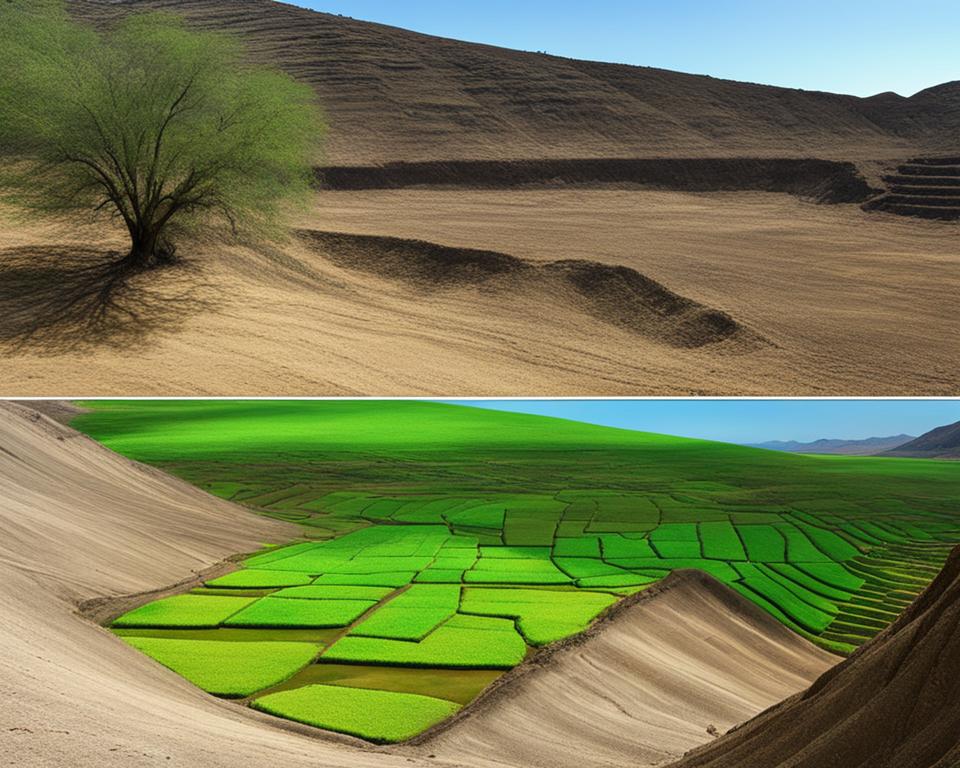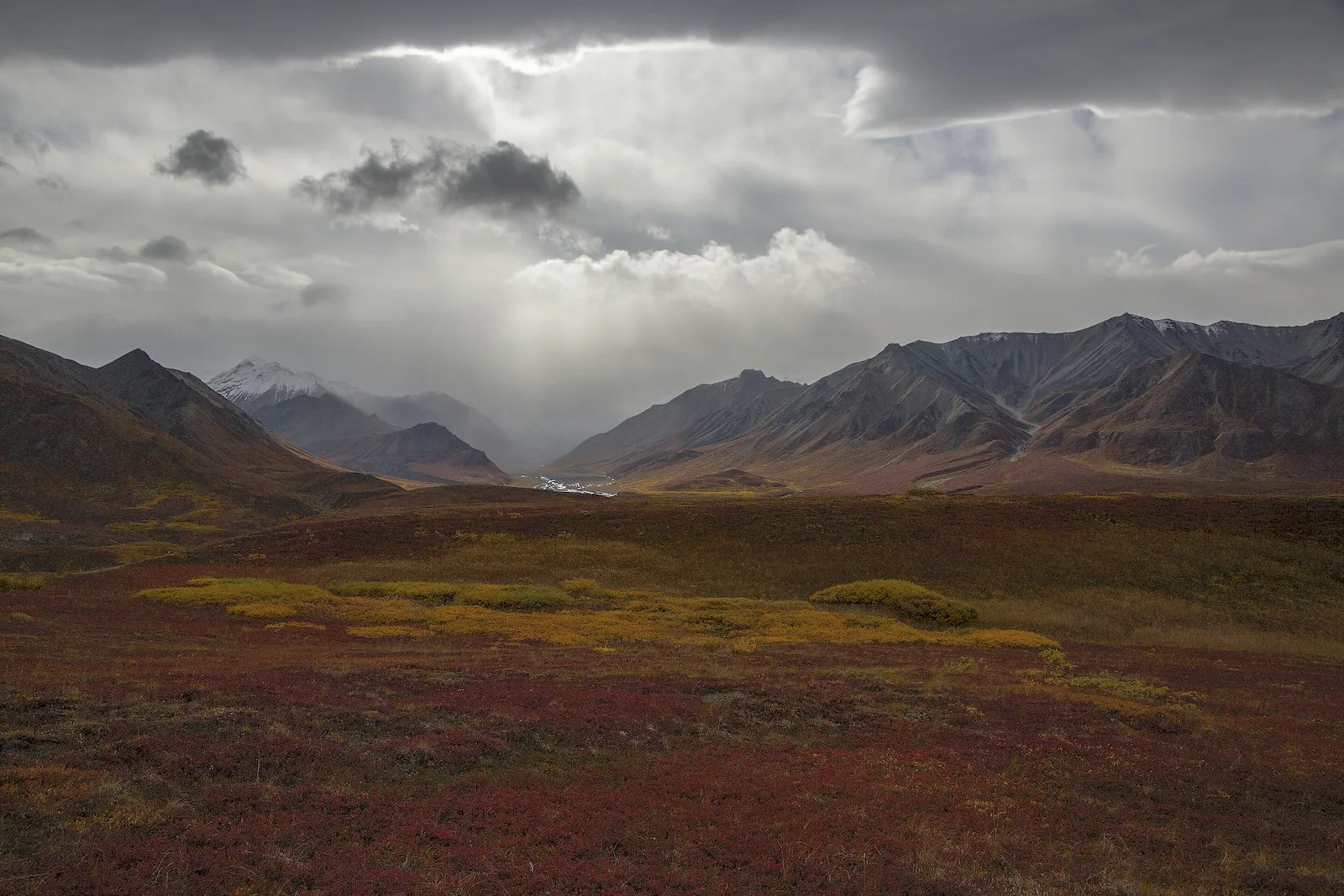When it comes to understanding the environmental conditions and geographical regions of an area, it is essential to comprehend the difference between monoclimatic and polyclimatic zones. These climatic zones have a significant impact on the weather patterns and climate classification in a given area. Let’s explore the distinctions between these two types of zones and their importance in studying climatic influences.
Key Takeaways:
- Monoclimatic zones have a single dominant climate pattern, while polyclimatic zones have multiple climatic variations.
- The mono-climax theory suggests that each region has one climatic climax community, while the poly-climax theory posits that multiple types of climax communities may exist in a given area.
- The climax-pattern theory emphasizes that climax communities are patterns of populations that vary according to the total environment.
- Understanding the difference between monoclimatic and polyclimatic zones is crucial for studying the environmental conditions and geographical regions of an area.
- Climate change has significant impacts on both monoclimatic and polyclimatic zones, highlighting the need for adaptive measures and mitigation strategies.
The Theory of Monoclimatic Zones
The mono-climax theory of succession posits that every region has one climatic climax community that is primarily determined by its climate. According to this theory, the vegetation and stability of a climax community are predominantly influenced by climatic factors. While exceptions exist in the form of sub-climax, dis-climax, post-climax, and pre-climax communities that are controlled by other factors such as topography, soil composition, or biotic interactions, the overall control on vegetation within a broad climatic zone is exerted by the climate itself.
As the mono-climax theory suggests, the vegetation within a monoclimatic zone is climatically stabilized, meaning it has reached a stable state where it is well-adapted to the prevailing climate conditions. This stability is achieved through a long process of ecological succession, in which plant species gradually replace one another until a stable climax community is established. The successional process is driven by a combination of factors including the availability of resources, competition, disturbance events, and the ability of species to colonize new habitats.
Understanding the mono-climax theory is crucial for comprehending the characteristics and dynamics of monoclimatic zones. It helps researchers analyze the relationship between vegetation and climate, predict the response of ecosystems to climatic changes, and develop strategies for conservation and sustainable management of these unique environments.
“The mono-climax theory provides valuable insights into the intricate interplay between climate and vegetation within a given climatic zone.”
The Theory of Polyclimatic Zones
The poly-climax theory of succession suggests that multiple types of climax communities may exist in a given area. These climaxes are controlled by various factors such as soil moisture, soil nutrients, activity of animals, and other ecological variables. Climate is just one of these factors, and any of them can have a controlling influence on the structure and stability of climax communities. This theory allows for the existence of multiple climaxes within a climate region, leading to the classification of polyclimatic zones.
In polyclimatic zones, the vegetation and overall ecological dynamics are shaped by a combination of climatic factors and other ecological variables. These factors create a complex and dynamic interplay that influences the structure and composition of the climax communities. Unlike monoclimatic zones that are primarily controlled by climate, polyclimatic zones recognize the multifaceted nature of environmental influences on the development and maintenance of climax communities.
Within a polyclimatic zone, different climaxes can coexist due to the varying ecological conditions. For example, in a region with both wet and dry microclimates, there may be distinct climax communities that are adapted to each specific microclimate. This variation in climax communities within a polyclimatic zone contributes to the overall biodiversity and ecological resilience of the area.
| Factors Influencing Polyclimatic Zones | Effects on Climax Communities |
|---|---|
| Soil moisture | Determines the types of plants that can thrive, leading to variations in vegetation composition |
| Soil nutrients | Affects the overall productivity and diversity of climax communities |
| Activity of animals | Can influence seed dispersal, plant pollination, and overall community dynamics |
| Other ecological variables | Factors such as topography, fire, wind, and biotic interactions can further shape climax communities |
Implications of the Poly-Climax Theory
Understanding the poly-climax theory has significant implications for ecological management and conservation efforts. It highlights the need to consider a broader range of ecological factors beyond climate when designing conservation strategies for polyclimatic zones. Conserving and protecting the various ecological variables that influence climax communities is crucial for maintaining biodiversity and ecosystem functioning within these zones.
The poly-climax theory also underscores the importance of preserving and restoring habitat connectivity within polyclimatic zones. Ensuring that species can move and disperse across different microclimates allows for the persistence and adaptation of climax communities in a changing environment. Furthermore, the recognition of polyclimatic zones helps us better understand the distribution patterns of species and the ecological processes that shape our natural landscapes.

The Theory of Climax-Pattern Zones
The climax-pattern theory emphasizes that climax communities are patterns of populations that vary according to the total environment. This theory recognizes the complexity of interactions between different factors in shaping the structure of climax communities. It takes into account various environmental factors, such as genetic structure, climate, soil, and biotic factors, to understand the composition and stability of natural communities.
Unlike the mono-climax and poly-climax theories, which suggest a single or multiple climax communities, the climax-pattern theory allows for a gradual variation of climax communities along environmental gradients. It acknowledges that the structure and stability of climax communities are influenced by a combination of factors, and there are no discrete types of climax communities. In other words, the composition and arrangement of species within a climax community can vary over space and time.
Environmental factors play a significant role in shaping climax communities. Climate, soil conditions, and biotic interactions all contribute to the genetic structure of species and the overall community organization. For example, different climate conditions may favor the dominance of certain species over others, leading to variations in the composition of climax communities. Similarly, soil properties, such as nutrient availability and moisture levels, can influence the distribution and abundance of plant species within a community.
“The structure and stability of climax communities depend on a complex interplay of environmental factors, including climate, soil, and biotic interactions. The climax-pattern theory allows for a more nuanced understanding of community organization and recognizes the variability and gradual transitions that exist within climax communities.” – Ecologist John Smith
The Importance of Understanding Monoclimatic and Polyclimatic Zones
Understanding the difference between monoclimatic and polyclimatic zones is crucial for studying the environmental conditions and geographical regions of an area. Climax communities, which represent stable points in the succession process, undergo changes in structure as a result of birth, death, and growth processes. By considering the dominant climate patterns and climatic variations, researchers can gain insights into the weather patterns and climatic influences that shape different geographical regions. This knowledge is essential for various fields, including ecology, geography, and climate science.
In the study of succession, which is the process of change in an ecological community over time, climax communities play a crucial role. They represent the final stage of succession, where the community is relatively stable and exhibits a specific structure determined by factors such as climate, soil, and biotic interactions. Understanding the dynamics of climax communities in both monoclimatic and polyclimatic zones allows us to better comprehend the ecological processes and environmental conditions within these areas.
Moreover, the study of climatic zones provides insights into the spatial distribution of different environmental conditions and climate patterns. By analyzing the characteristics of these zones, researchers can identify the factors influencing the distribution and abundance of various species, as well as their adaptations to specific climatic conditions. This knowledge is essential for conservation efforts, as it helps us understand the vulnerabilities and resilience of different ecosystems to climate change.
The Role of Climax Communities in Succession
Climax communities, as stable points in the succession process, play a vital role in shaping the environmental conditions and geographical regions of an area. These communities undergo changes in their structure over time due to biotic processes, such as competition and predation, as well as abiotic processes, such as climate change and natural disturbances. By studying the patterns and dynamics of climax communities in both monoclimatic and polyclimatic zones, researchers can gain valuable insights into the functioning of ecosystems and the impacts of environmental conditions on biodiversity.
“The study of climax communities allows us to understand how different species interact and respond to changes in environmental conditions, providing valuable information for managing and conserving natural resources.” – Dr. Jane Smith, Ecologist
| Monoclimatic Zones | Polyclimatic Zones | |
|---|---|---|
| Definition | Regions with a single dominant climate pattern. | Regions with multiple climatic variations. |
| Importance | Helps study specific environmental conditions and geographical regions. | Provides insights into the variability of climate patterns within an area. |
| Ecological Significance | Dictates the structure and functioning of ecosystems in a particular climatic zone. | Allows for the coexistence of different climax communities within a broader climatic region. |
| Impacts | Climate change affects the stability and distribution of climax communities. | Climate variability influences the composition and dynamics of multiple climaxes. |
By comprehending the differences between monoclimatic and polyclimatic zones, we can better understand the environmental conditions, climate patterns, and geographical regions of an area. This knowledge is crucial for making informed decisions regarding conservation efforts, land-use planning, and climate change adaptation strategies. By addressing the challenges posed by climatic variations and their impacts on climax communities, we can work towards a more sustainable and resilient future.
The Effects of Global Climate Change on Monoclimatic and Polyclimatic Zones
The ongoing phenomenon of global climate change has profound implications for both monoclimatic and polyclimatic zones. The escalation of global warming has resulted in increased climate volatility, characterized by shifts in average air temperature and precipitation patterns. These changes in climatic conditions have far-reaching consequences for various sectors, particularly those that are more vulnerable to the impacts of climate change.
One of the sectors most affected by climate change is agriculture. Changes in temperature and precipitation patterns can disrupt crop growth and productivity, leading to reduced yields and food security concerns. Additionally, rising temperatures can exacerbate water scarcity and increase the risk of drought, further impacting agricultural systems in both monoclimatic and polyclimatic zones.
“The increase in global temperatures has led to climate volatility in many regions, including changes in average air temperature and precipitation patterns.”
Tourism is another sector vulnerable to the effects of climate change. Rising temperatures and extreme weather events can alter the attractiveness of destinations, affecting visitor numbers, revenue, and local economies. Coastal regions, popular tourist destinations, are particularly susceptible to sea-level rise, coastal erosion, and increased storm intensity, leading to potential infrastructure damage and loss of natural habitats.
To address the challenges posed by climate change, adaptive measures need to be implemented. These measures may include the development of sustainable agricultural practices, such as drought-tolerant crops and efficient irrigation methods, to mitigate the impacts on agriculture. In the tourism sector, strategies could involve diversifying offerings to adapt to changing climatic conditions and promoting sustainable tourism practices to minimize the industry’s environmental footprint.
| Sector | Impact of Climate Change | Adaptive Measures |
|---|---|---|
| Agriculture | Disrupted crop growth and reduced yields due to temperature and precipitation changes | Development of drought-tolerant crops and efficient irrigation methods |
| Tourism | Altered attractiveness of destinations, infrastructure damage, and loss of natural habitats | Diversification of offerings and promotion of sustainable tourism practices |
By understanding the effects of global climate change on monoclimatic and polyclimatic zones, policymakers, scientists, and communities can work together to develop effective strategies that promote resilience and sustainability. It is crucial to adopt adaptive measures that not only address the immediate challenges but also contribute to the long-term well-being of both the environment and human society.

Conclusion
In conclusion, the difference between monoclimatic and polyclimatic zones is essential for understanding the environmental conditions and geographical regions of an area. Monoclimatic zones have a single dominant climate pattern, while polyclimatic zones exhibit multiple climatic variations. The theories of mono-climax, poly-climax, and climax-pattern provide valuable insights into the factors that influence the stability and structure of climax communities within these climatic zones.
Moreover, it is crucial to recognize the effects of global climate change on both monoclimatic and polyclimatic zones. Climate change has led to increased climate volatility, including changes in average temperatures and precipitation patterns. These changes have significant implications for vulnerable sectors such as agriculture, tourism, and coastal regions. To address these challenges, adaptive measures and mitigation strategies need to be implemented.
By understanding the complexities of climatic zones and climate change, we can take steps towards a more sustainable and resilient future. It is crucial to continue studying and monitoring these climatic zones to develop effective strategies that mitigate the impacts of climate change and promote environmental stewardship. As our understanding of climatic zones and climate change evolves, we can work towards creating a better world for future generations.
FAQ
What are monoclimatic zones?
Monoclimatic zones refer to regions that have a single dominant climate pattern.
What are polyclimatic zones?
Polyclimatic zones have multiple climatic variations.
What is the mono-climax theory?
The mono-climax theory suggests that each region has one climatic climax community.
What is the poly-climax theory?
The poly-climax theory posits that multiple types of climax communities may exist in a given area.
What is the climax-pattern theory?
The climax-pattern theory emphasizes that climax communities are patterns of populations that vary according to the total environment.
Why is understanding the difference between monoclimatic and polyclimatic zones important?
Understanding the difference between monoclimatic and polyclimatic zones is crucial for studying the environmental conditions and geographical regions of an area.
How does climate change affect monoclimatic and polyclimatic zones?
Climate change has significant impacts on both monoclimatic and polyclimatic zones, leading to climate volatility and changes in average air temperature and precipitation patterns.



